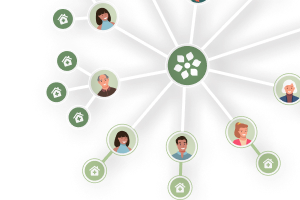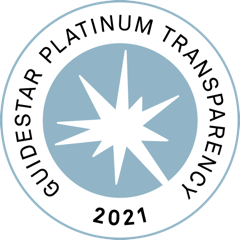Findings from an International Phase 3 Trial: Uproleselan for Relapsed/Refractory AML

Acute myeloid leukemia (AML) is an aggressive type of blood cancer that mainly affects the elderly, and in rare cases, it can also appear in children. It is a complex disease that involves different mutations. Sometimes, these mutations can predict if a patient is prone to relapse (meaning that the disease comes back after a period of time) or to be refractory (after a few treatments, the AML comes back, and previous therapies lose efficacy against it).
That’s why research for new therapies that work on relapsed and refractory AML is important; that way, people can remain disease-free for longer periods.
Uproleselan (GMI-1271) is a treatment designed to block a molecule that plays a role in leukemia cell survival and resistance to chemotherapy. Its intended purpose is to enhance the effectiveness of chemotherapy.
In this article, you’ll learn recent updates on the phase 3 clinical trial with uproleselan. This trial aims to further evaluate uproleselan in combination with chemotherapy compared to chemotherapy alone in patients with relapsed or refractory acute myeloid leukemia.
Chemotherapy With or Without Uproleselan
The study, presented at the 2024 ASH conference, included 388 adult patients with AML in either the first or second relapse and who were eligible for chemotherapy.
Participants were randomly assigned to receive either uproleselan with chemotherapy or chemotherapy alone. The primary goal of the study was to assess overall survival, with additional measures including side effects, complete remission, and depth of response.
Key Findings
- The median overall survival (OS) was 13 months for the group receiving uproleselan and 12.3 months for the group receiving chemotherapy alone.
- 46.4% of people who received uproleselan had an overall remission, compared with 41.2% of people who received chemotherapy alone.
- Minimal residual disease (MRD) was negative in 67.1% of those treated with uproleselan and 61.5% of the chemotherapy-alone group.
- In patients who received a stem cell transplant, overall survival was longer in the uproleselan group, with the median survival not yet reached, compared to 24.8 months in the chemotherapy-alone group.
- 7.2% of patients had inflammation of gums evaluated as a severe side effect.
How Did Patients with Primary Refractory AML Respond?
A subgroup of patients with primary refractory acute myeloid leukemia whose initial treatment wasn’t as effective showed notable improvements with uproleselan.
-
The median overall survival for these patients was 31.2 months in the uproleselan group compared to 10.1 months in the chemotherapy-alone group.
-
The duration of response for those who achieved remission was not yet reached for those receiving uproleselan, while it was 12.7 months for those receiving chemotherapy alone.
-
Among patients who underwent stem cell transplantation, survival at 60 months was 57.5% for those treated with uproleselan and 27.7% for those in the chemotherapy-alone group.
Final Thoughts
Although this study found no significant improvement in survival with uproleselan, the overall survival was longer in the uproleselan group when they received a stem cell transplant. The side effects weren’t much different between the two groups.
However, the findings suggest meaningful benefits for patients with primary refractory acute myeloid leukemia. The improved survival outcomes and deep responses in this subgroup highlight the potential role of uproleselan in addressing the needs of patients who have limited treatment options. The frequency of side effects was similar between the uproleselan and chemotherapy-alone groups.
Learn more about new AML treatment options on our news site.
Source:
Acute myeloid leukemia (AML) is an aggressive type of blood cancer that mainly affects the elderly, and in rare cases, it can also appear in children. It is a complex disease that involves different mutations. Sometimes, these mutations can predict if a patient is prone to relapse (meaning that the disease comes back after a period of time) or to be refractory (after a few treatments, the AML comes back, and previous therapies lose efficacy against it).
That’s why research for new therapies that work on relapsed and refractory AML is important; that way, people can remain disease-free for longer periods.
Uproleselan (GMI-1271) is a treatment designed to block a molecule that plays a role in leukemia cell survival and resistance to chemotherapy. Its intended purpose is to enhance the effectiveness of chemotherapy.
In this article, you’ll learn recent updates on the phase 3 clinical trial with uproleselan. This trial aims to further evaluate uproleselan in combination with chemotherapy compared to chemotherapy alone in patients with relapsed or refractory acute myeloid leukemia.
Chemotherapy With or Without Uproleselan
The study, presented at the 2024 ASH conference, included 388 adult patients with AML in either the first or second relapse and who were eligible for chemotherapy.
Participants were randomly assigned to receive either uproleselan with chemotherapy or chemotherapy alone. The primary goal of the study was to assess overall survival, with additional measures including side effects, complete remission, and depth of response.
Key Findings
- The median overall survival (OS) was 13 months for the group receiving uproleselan and 12.3 months for the group receiving chemotherapy alone.
- 46.4% of people who received uproleselan had an overall remission, compared with 41.2% of people who received chemotherapy alone.
- Minimal residual disease (MRD) was negative in 67.1% of those treated with uproleselan and 61.5% of the chemotherapy-alone group.
- In patients who received a stem cell transplant, overall survival was longer in the uproleselan group, with the median survival not yet reached, compared to 24.8 months in the chemotherapy-alone group.
- 7.2% of patients had inflammation of gums evaluated as a severe side effect.
How Did Patients with Primary Refractory AML Respond?
A subgroup of patients with primary refractory acute myeloid leukemia whose initial treatment wasn’t as effective showed notable improvements with uproleselan.
-
The median overall survival for these patients was 31.2 months in the uproleselan group compared to 10.1 months in the chemotherapy-alone group.
-
The duration of response for those who achieved remission was not yet reached for those receiving uproleselan, while it was 12.7 months for those receiving chemotherapy alone.
-
Among patients who underwent stem cell transplantation, survival at 60 months was 57.5% for those treated with uproleselan and 27.7% for those in the chemotherapy-alone group.
Final Thoughts
Although this study found no significant improvement in survival with uproleselan, the overall survival was longer in the uproleselan group when they received a stem cell transplant. The side effects weren’t much different between the two groups.
However, the findings suggest meaningful benefits for patients with primary refractory acute myeloid leukemia. The improved survival outcomes and deep responses in this subgroup highlight the potential role of uproleselan in addressing the needs of patients who have limited treatment options. The frequency of side effects was similar between the uproleselan and chemotherapy-alone groups.
Learn more about new AML treatment options on our news site.
Source:

about the author
Jimena Vicencio
Jimena is an International Medical Graduate and a member of the HealthTree Writing team. Currently pursuing a bachelor's degree in journalism, she combines her medical background with a storyteller’s heart to make complex healthcare topics accessible to everyone. Driven by a deep belief that understanding health is a universal right, she is committed to translating scientific and medical knowledge into clear, compassionate language that empowers individuals to take control of their well-being.
More on Clinical Trials
Trending Articles
Get the Latest Blood Cancer Updates, Delivered to You.
By subscribing to the HealthTree newsletter, you'll receive the latest research, treatment updates, and expert insights to help you navigate your health.















